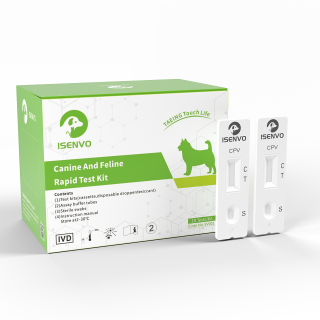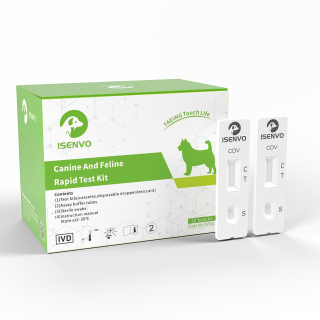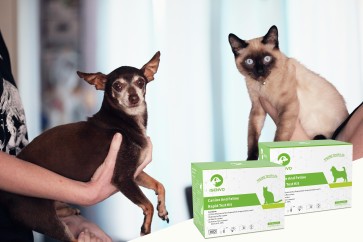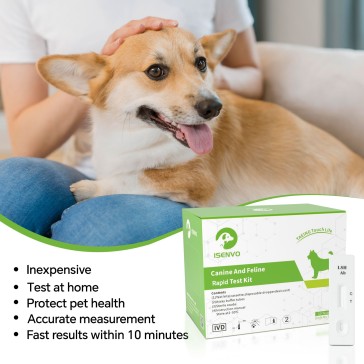In any environment where dogs live closely—whether it’s a loving family home, a rescue center, or a breeder’s facility—infectious diseases pose a real threat. Among the most serious are Canine Parvovirus (CPV) and Canine Distemper Virus (CDV). These viruses are highly contagious, potentially fatal, and often strike without much warning.
Modern veterinary science has made it easier to detect and control these threats early, and responsible pet care starts with education. This article aims to help dog owners understand CPV and CDV, their prevention, and how early detection tools developed by companies like Taeing are changing how we manage pet health.
1. What Are CPV and CDV?
Canine Parvovirus (CPV)
CPV attacks the intestinal lining, often causing:
Severe vomiting
Bloody diarrhea
Rapid dehydration
Lethargy and fever
Young puppies and unvaccinated dogs are especially vulnerable. Without prompt care, CPV can be fatal within days.
Canine Distemper Virus (CDV)
CDV affects multiple systems: respiratory, gastrointestinal, and nervous.
Common symptoms include:
Nasal and eye discharge
Coughing and sneezing
Vomiting and diarrhea
Neurological signs: tremors, seizures, disorientation
Distemper can have long-term effects even in survivors.
2. How Do These Viruses Spread?
CPV: Mainly spread through contact with infected feces or contaminated surfaces (e.g., shoes, kennels, leashes). The virus can survive for weeks in the environment.
CDV: Airborne and transmitted via droplets from sneezing, coughing, or shared bowls.
Both viruses are extremely contagious. A single infected dog can endanger an entire household or shelter population.
3. Prevention: Your Best Defense
✅ Vaccination
Both CPV and CDV are preventable through core canine vaccines. Puppies should start vaccines at 6–8 weeks old and receive boosters until 16–18 weeks, followed by regular updates every 1–3 years.
✅ Hygiene & Disinfection
Routine sanitation is essential:
Use veterinary-approved disinfectants
Clean crates, bedding, and play areas frequently
Wash hands and disinfect tools between handling different dogs
✅ Isolation Practices
New dogs: Keep isolated for 10–14 days before introducing them to other pets
Sick dogs: Immediately separate to reduce risk of transmission
4. Early Detection: Why It Matters
Recognizing the early signs of CPV or CDV can save lives. But in some cases, especially in rescue or high-risk settings, symptoms can be vague or delayed. That’s where modern rapid antigen screening technology comes in.
The Role of Rapid Detection
Advances in veterinary diagnostics have made on-site screening a reality. Carefully engineered testing platforms, like those integrated into Taeing's veterinary diagnostic line, allow caregivers to detect viral antigens within minutes from fecal or nasal samples.
Applications:
Routine screening in shelters or breeders
Immediate testing of dogs with diarrhea, cough, or eye discharge
Early triage in veterinary clinics or foster homes
While not a replacement for veterinary confirmation, these tools provide a crucial first layer of defense in identifying and isolating infections early.
5. Support Your Dog’s Health Daily
Beyond vaccines and testing, daily care plays a vital role in a dog’s immune defense:
Feed a nutritious, balanced diet (avoid overly processed food)
Ensure access to clean water and proper rest
Reduce stress through play, safe spaces, and positive routines
Stay on schedule with deworming and flea/tick prevention
Regular vet visits for checkups and early signs of illness
6. Final Thoughts
✔ Educate yourself about CPV and CDV risks
✔ Vaccinate and follow hygiene best practices
✔ Watch for early symptoms—and act quickly
✔ Use reliable rapid screening tools when needed
✔ Always consult a veterinarian for diagnosis and treatment
At Taeing, we believe that knowledge empowers care. By combining scientific innovation with compassion, our mission is to make early detection and disease control more accessible—because every dog deserves a healthy start.











